
Raymond Mathewson Hood was an American architect who worked in the Art Deco style.

Skidmore, Owings & Merrill (SOM) is a global architectural, urban planning and engineering firm. It was founded in Chicago in 1936 by Louis Skidmore and Nathaniel Owings. In 1939, they were joined by engineer John O. Merrill. The firm opened its second office, in New York City, in 1937 and has since expanded all over the world, with offices in San Francisco (1946), Los Angeles, Washington, D.C., London, Hong Kong, Shanghai, Mumbai and Dubai.

The Transamerica Pyramid at 600 Montgomery Street between Clay and Washington Streets in the Financial District of San Francisco, California, United States, is a 48-story futurist building and the second-tallest skyscraper in the San Francisco skyline. It was the tallest building in San Francisco from its inception in 1972 until 2018 when the newly constructed Salesforce Tower surpassed its height. The building no longer houses the headquarters of the Transamerica Corporation, which moved its U.S. headquarters to Baltimore, Maryland. However, the building is still associated with the company by being depicted on the company's logo. Designed by architect William Pereira and built by Hathaway Dinwiddie Construction Company, the building stands at 853 feet (260 m). On completion in 1972 it was the eighth-tallest building in the world. In February 2020 the building was sold to NYC investor Michael Shvo, although the sale has not yet closed.
The year 1969 in architecture involved some significant architectural events and new buildings.

Adolph Alexander Weinman was a German-born American sculptor and architectural sculptor.
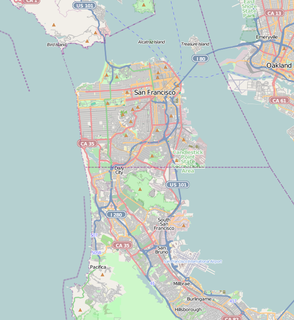
The San Francisco Maritime National Historical Park is located in San Francisco, California, United States. The park includes a fleet of historic vessels, a visitor center, a maritime museum, and a library/research facility. The park used to be referred to as the San Francisco Maritime Museum, however the former 1951 name changed in 1978 when the collections were acquired by the National Park Service. Today's San Francisco Maritime National Historical Park was authorized in 1988; the maritime museum is among the park's many cultural resources. The park also incorporates the Aquatic Park Historic District, bounded by Van Ness Avenue, Polk Street, and Hyde Street.
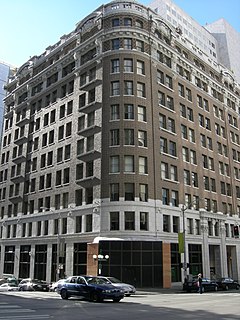
The Metropolitan Tract is an area of land in downtown Seattle owned by the University of Washington. Originally covering 10 acres (40,000 m2), the 1962 purchase of land for a garage for the Olympic Hotel expanded the plot to 11 acres (45,000 m2). The Metropolitan Tract is primarily located in a rectangle formed by Seneca St, Third Ave, Union St, and Sixth Ave.

Isaac Newton Phelps Stokes was an American architect. His early architectural career was in partnership with John Mead Howells. Stokes was a pioneer in social housing who co-authored the 1901 New York tenement house law. For twenty years he worked on The Iconography of Manhattan Island, a six volume compilation that became one of the most important research resources about the early development of the city. His designs included St. Paul's Chapel at Columbia University and several urban housing projects in New York City. He was also a member of the New York Municipal Arts Commission for twenty-eight years and president for nine of these.

The American Radiator Building is a 338 ft (103 m), 23-story landmark skyscraper located at 40 West 40th Street, in midtown Manhattan, New York City. It was conceived by the architects John Howells and Raymond Hood, and built in 1924 for the American Radiator Company, five years before it merged with Standard Sanitary Manufacturing Company to form American Radiator and Standard Sanitary Corporation which 38 years later, became simply known as American Standard.
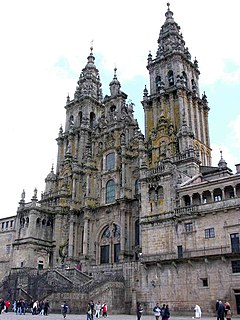
Churrigueresque, in a lesser extent it was also called "Ultra Baroque", refers to a Spanish Baroque style of elaborate sculptural architectural ornament which emerged as a manner of stucco decoration in Spain in the late 17th century and was used up to about 1750, marked by extreme, expressive and florid decorative detailing, normally found above the entrance on the main facade of a building.

Howells & Stokes was an American architectural firm founded in 1897 by John Mead Howells and Isaac Newton Phelps Stokes. The firm dissolved in 1917.
Schultze & Weaver was an architecture firm established in New York City in 1921. The partners were Leonard Schultze and S. Fullerton Weaver.
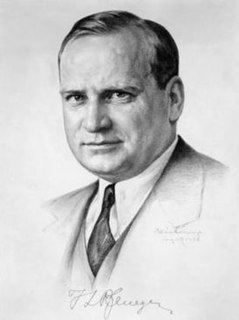
Timothy Ludwig Pflueger was a prominent architect, interior designer and architectural lighting designer in the San Francisco Bay Area in the first half of the 20th century. Together with James R. Miller, Pflueger designed some of the leading skyscrapers and movie theaters in San Francisco in the 1920s, and his works featured art by challenging new artists such as Ralph Stackpole and Diego Rivera. Rather than breaking new ground with his designs, Pflueger captured the spirit of the times and refined it, adding a distinct personal flair. His work influenced later architects such as Pietro Belluschi.
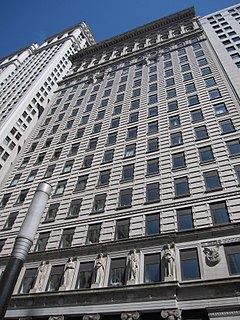
The American Surety Building is an early skyscraper at Pine Street and Broadway in the Financial District of Manhattan in New York City, across from Trinity Church. The 26-story building, designed in a Neo-Renaissance style by Bruce Price with a later expansion by Herman Lee Meader, is 388 feet (118 m) tall. It was one of Manhattan's first buildings with steel framing and curtain wall construction, as well as the second tallest building in New York City when completed.
"America's Favorite Architecture" is a list of buildings and other structures identified as the most popular works of architecture in the United States.
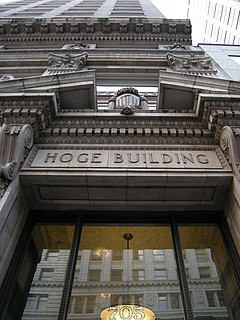
The Hoge Building is a 17-story building constructed in 1911 by, and named for James D. Hoge, a banker and real estate investor, on the northwest corner of Second Avenue and Cherry Street in Seattle, Washington. The building was constructed primarily of tan brick and terracotta built over a steel frame in the architectural style of Second Renaissance Revival with elements of Beaux Arts. It was the tallest building in Seattle from 1911 to 1914 with the completion of Smith Tower.
Daniel James Patterson was an American architect around the turn of the 20th century. Much of his work was done for the Southern Pacific Railroad.

The Federal Reserve Bank Building, also known as the Federal Reserve Bank of San Francisco, Seattle Branch, served as the offices of the Seattle branch of the Federal Reserve Bank of San Francisco for over 50 years, from 1951 to 2008.

Purdy and Henderson was a New York City-based engineering firm founded by Corydon Tyler Purdy and Lightner Henderson. They were active in the United States and Cuba between 1890 and 1944.

Abraham Horace Albertson was an American architect who was one of Seattle, Washington's most prominent architects of the first half of the 20th century. He was born in New Jersey and educated at Columbia University in New York. Early in his career, he moved to Seattle in the employ of a well-known New York architectural firm with that was developing a large area in downtown. He worked on many projects in Seattle from around 1910 through the 20s and early 30s. Some of his designs are Seattle landmarks and/or listed on the National Register of Historic Places.


















